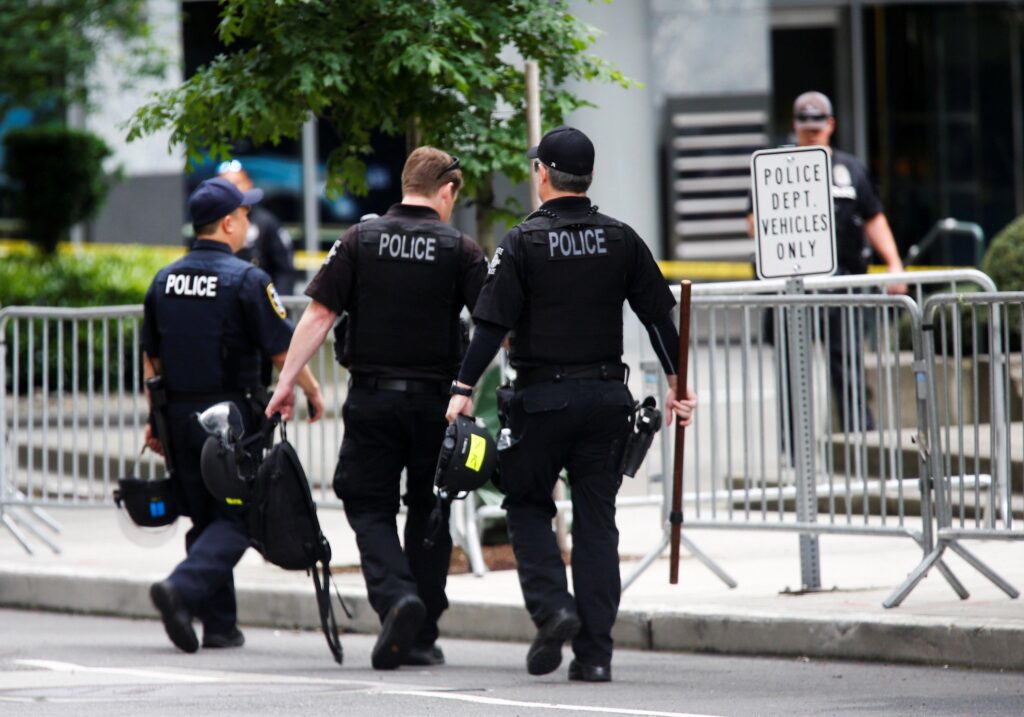Table of Contents
- Seattle Police Department Response to LGBTQIA+ Protests Under Scrutiny
- Analysis of Use-of-Force Incidents and Community Impact in Seattle
- Calls for Policy Reform and Increased Accountability in Law Enforcement
- Recommendations for Enhancing Police-Community Relations and Protecting Protester Rights
- In Retrospect
Seattle Police Department Response to LGBTQIA+ Protests Under Scrutiny
Recent demonstrations advocating for LGBTQIA+ rights in Seattle have sparked intense public debate over the city’s law enforcement tactics. Numerous eyewitness accounts and video footage highlight instances where officers employed force that many activists and community members describe as disproportionate to the situations encountered during these peaceful protests. Questions are being raised regarding the adherence to established protocols intended to protect demonstrator rights and ensure de-escalation.
Critics of the Seattle Police Department’s response emphasize several key concerns:
- Use of crowd control measures such as tear gas and rubber bullets in non-violent scenarios
- Lack of transparent communication between police leadership and protest organizers
- Insufficient training tailored to handling sensitive community events
- Potential breaches of constitutional rights related to freedom of assembly
In response, SPD officials have announced an internal review and promised to engage with LGBTQIA+ advocacy groups to better align policing strategies with respect for civil liberties. Meanwhile, city council members are pushing for legislative oversight to ensure accountability and restore public trust.
Analysis of Use-of-Force Incidents and Community Impact in Seattle
Recent data and eyewitness accounts reveal a concerning pattern in the deployment of force by Seattle police during the height of protests by the LGBTQIA+ community. Incidents frequently involved aggressive tactics that escalated tensions rather than defusing them. The use of pepper spray, baton strikes, and physical restraints in close-quarter confrontations raised questions about the proportionality and necessity of force in managing peaceful assemblies. Civil rights groups documented multiple cases where officers targeted visibly identifiable LGBTQIA+ organizers, exacerbating community fears of targeted discrimination and systemic bias.
The ripple effects on the community have been profound. Beyond immediate physical harm, trust between law enforcement and marginalized groups has eroded significantly. Activists and residents alike report heightened anxiety and reluctance to engage with police, even in emergency situations. Key concerns include:
- Lack of transparent investigations into use-of-force complaints
- Insufficient de-escalation training tailored to LGBTQIA+ contexts
- Disproportionate impact on vulnerable individuals during protests
Calls for Policy Reform and Increased Accountability in Law Enforcement
The recent incidents involving the Seattle Police Department during LGBTQIA+ protests have intensified calls from community leaders and advocacy groups for substantial reforms in law enforcement policies. Critics argue that existing protocols lack sufficient safeguards against excessive force, particularly in situations involving marginalized communities. There is a growing demand for the adoption of more transparent use-of-force guidelines that prioritize de-escalation tactics and protect the right to peaceful assembly without fear of undue police aggression.
Further, activists and policymakers alike are pushing for mechanisms that ensure greater accountability within the police force. Key proposals include:
- Independent oversight boards empowered to review complaints and investigations into police conduct.
- Mandatory body camera usage with clear regulations on footage transparency and public access.
- Enhanced training focused on cultural competency and crisis intervention specific to diverse communities.
Collectively, these measures aim to rebuild trust between the Seattle Police Department and the communities they serve while safeguarding civil rights during public demonstrations.
Recommendations for Enhancing Police-Community Relations and Protecting Protester Rights
To rebuild trust between law enforcement and the community, it is essential that police departments implement comprehensive training focused on de-escalation techniques and cultural competency. Emphasizing transparency and accountability, officers should be equipped not only with tactical skills but also with an understanding of the unique challenges faced by LGBTQIA+ communities. Establishing independent oversight bodies that monitor police conduct during protests can ensure impartial review of use-of-force incidents, fostering a climate where protesters feel their rights are respected and protected.
Further, law enforcement agencies must prioritize clear communication channels before, during, and after demonstrations, enabling dialogue that can preempt misunderstandings and reduce tensions. Key practices include:
- Engagement with community leaders: Collaborate with advocacy groups to co-develop protest management guidelines that respect the right to peaceful assembly.
- Use of body cameras and public release of footage: Strengthen public confidence by documenting interactions and making recordings available for review.
- Implementing non-violent crowd control tactics: Prioritize alternative methods over force to maintain order without infringing on civil liberties.
In Retrospect
As Seattle continues to grapple with tensions between law enforcement and the LGBTQIA+ community, the recent use-of-force controversies highlight the urgent need for transparent accountability and meaningful dialogue. Moving forward, city officials, police leaders, and advocacy groups face the challenge of balancing public safety with the protection of civil rights. The ongoing protests serve as a poignant reminder that addressing systemic concerns requires not only policy reform but also a commitment to rebuilding trust between the Seattle Police Department and the diverse communities it serves.Check Our Other Blogs
- StunGun – Your Trusted Source for Stun Guns, Laws, and Self-Defense Tips
- PepperSprayLaws – Your Trusted Resource for Pepper Spray Information
- StunGunLaws – Your Trusted Guide to Stun Gun Legality and Safety




